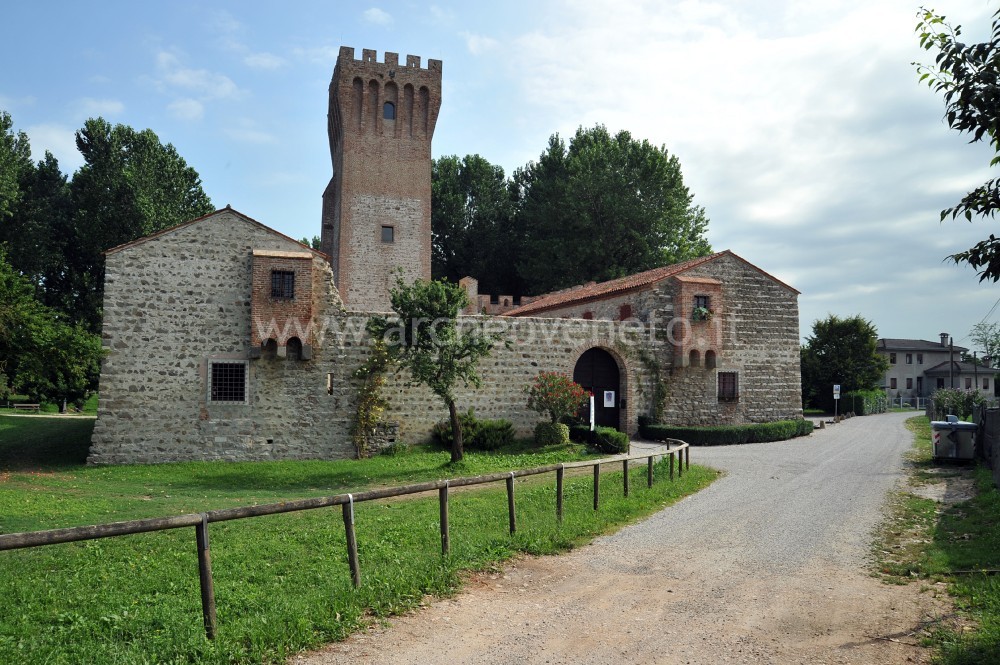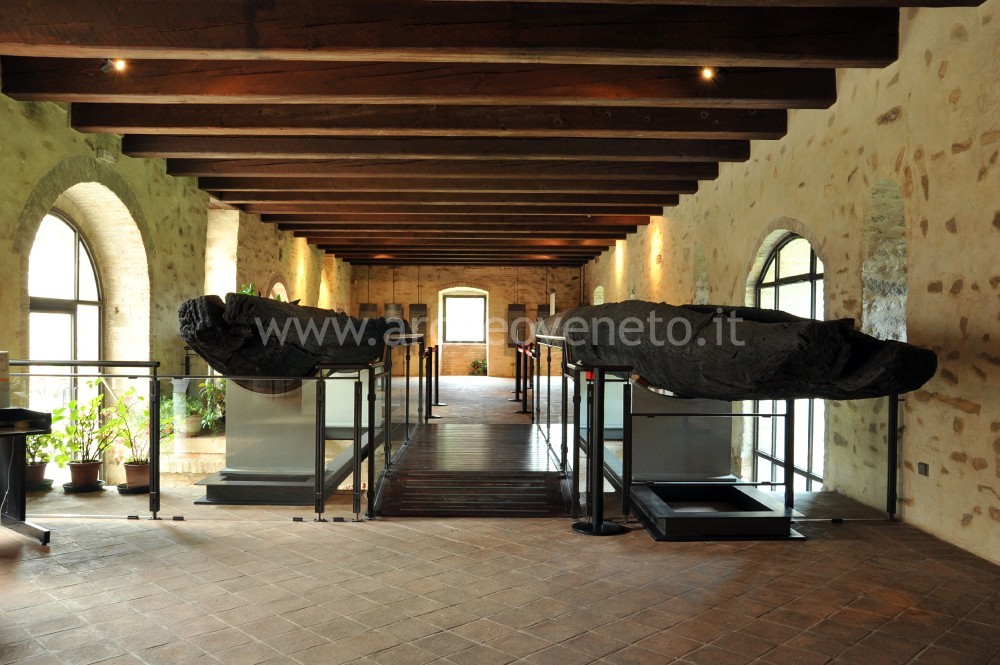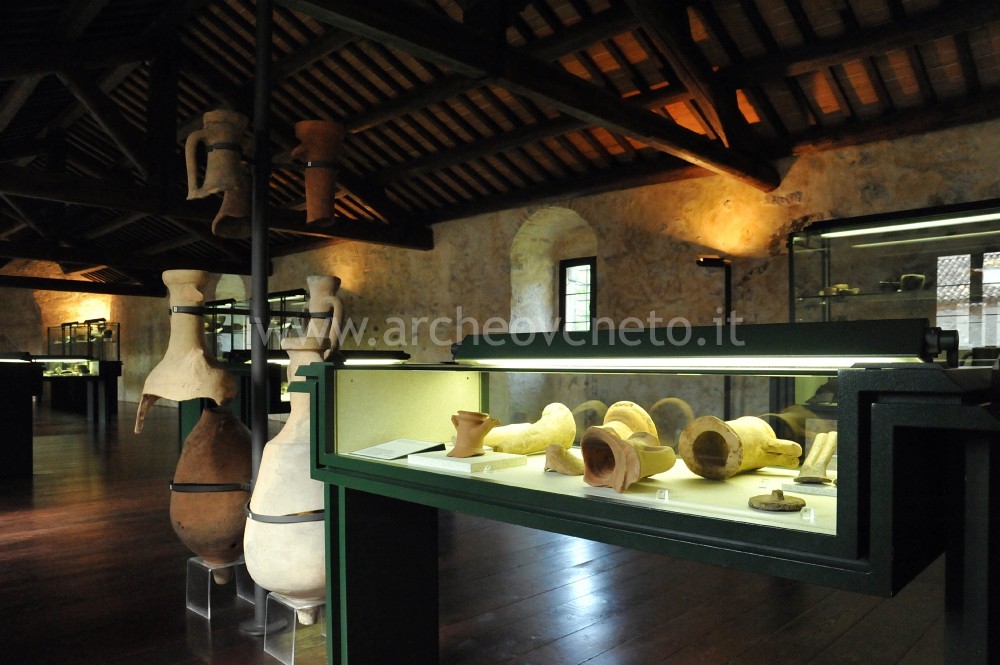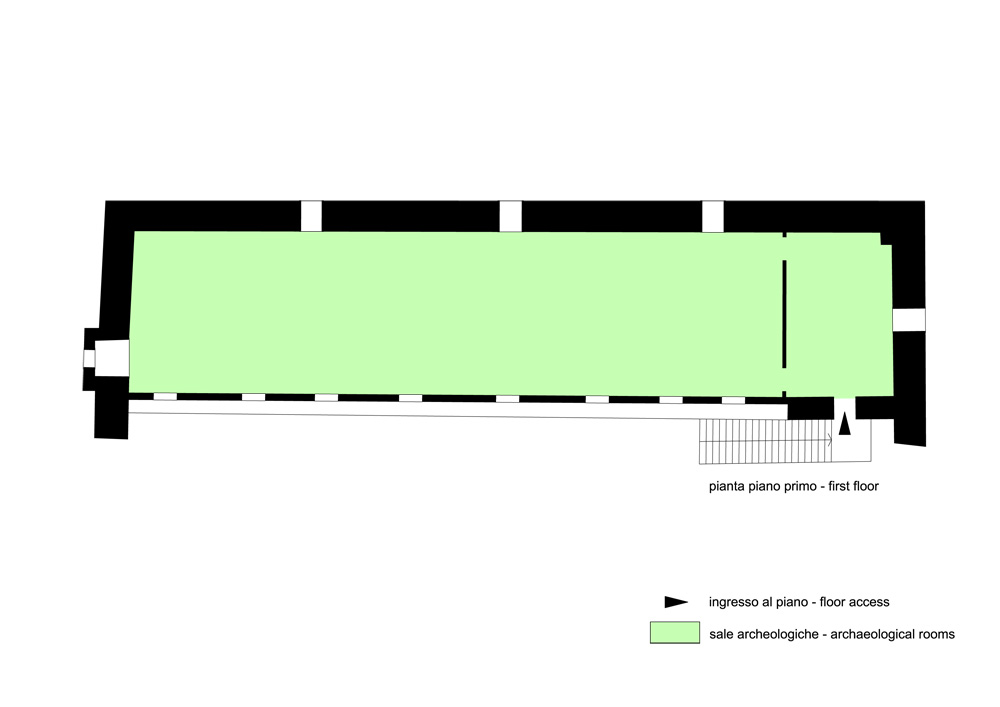|
|
File
Museum of the Bacchiglione River – Cervarese Santa Croce
|
Via Castel San Martino 23 – 35030 Cervarese Santa Croce (PD)
– Fax 049 9915425 – 0429 647157 |
  |
|
Summary

The museum of the Bacchiglione river is located inside the Castle of San Martino della Vaneza, which was donated by the Papafava-Carraresi family to the Province of Padua for cultural purposes. The museum is divided into two parts: the geo-morphological section and the archaeological one. Both of them display finds that were discovered inside or near the bed of the Bracchiglione river during the excavations carried out by the so called “sabbionari” (people extracting sand from the riverbed to use it as building material) and thanks to the underwater surveys commissioned to the scuba divers by numerous associations of Padua starting from the 70’s.
Collection history
In the 70’s the ArcheoClub of Padua (now called Società Archeologica di Padova – Archaeological Association of Padua), the Club Sommozzatori di Padova (Divers’s club of Padua) and the ArcheoSub-Metamauco cooperative collected a set of finds discovered in the stretch of the river between Cervarese Santa Croce and Ponte San Nicolò-Canale Roncajette. Starting from 1990 the regional board of the ministry of cultural heritage and environmental conservation in charge of archaeology (Soprintendenza Archeologica del Veneto) has been carrying out numerous and well-structured surveys in order to understand the kind of settlement that characterized the area. Thanks to this study, in 1995 it was possible to accomplish the first expositive plan of the museum.
|

 The large room on the ground floor hosts two large single-trunk oak pyrogues of the Early Middle Ages found in 1972 in the bed of the Bacchiglione river, near the Selvazzano bridge. Together with a large hydrographic map of the local fluvial system, the pirogues provide important information on the socio-economic activities carried out in the region, on the patterns of the human settlements in the area surrounding the river and on the hydrographic evolution of the land, in particular from the late Antiquity on. The large room on the ground floor hosts two large single-trunk oak pyrogues of the Early Middle Ages found in 1972 in the bed of the Bacchiglione river, near the Selvazzano bridge. Together with a large hydrographic map of the local fluvial system, the pirogues provide important information on the socio-economic activities carried out in the region, on the patterns of the human settlements in the area surrounding the river and on the hydrographic evolution of the land, in particular from the late Antiquity on.
|

 The archaeological section is located on the first floor of the building and contains a chronological and topographic exhibition of the finds collected in the alluvial plain created by the river and which can be traced back to a time span stretching from the late Neolithic to the Roman imperial age. The archaeological section is located on the first floor of the building and contains a chronological and topographic exhibition of the finds collected in the alluvial plain created by the river and which can be traced back to a time span stretching from the late Neolithic to the Roman imperial age.
The small room, serving as anteroom of the real museum, which is usually used for temporary exhibitions, contains a large explanatory panel introducing the topic of the archaeological finds discovered along the river. The panel contains a large map that illustrates the course of the river and shows the places where the discoveries took place, also classifying them according to the archaeological phases.
After entering the room used for the permanent exhibition, you see on the right side the first display case, which contains daggers, swords and spearheads of the middle, recent and final bronze age that come from the site of Creola, in Trambacche.
The second display case contains artefacts found in the same area (Creola), which date back to a previous period, namely the late Neolithic age (late 4th millennium B.C.) and the time span from the 3rd millennium B.C. to the 10th cent. B.C., such as flint tools, spindle whorls, fictile counterweights, deer antler or wild boar tusk objects and a wood putty knife.
The set of archaeological finds dating back to the Early and Middle Bronze age (18th-15th cent. B.C.) is well defined, thanks to the numerous fictile items found near the Castle of San Martino, in the stretch Trambacche – Creola and near Tencarola and Voltabrusegnana. This rich collection includes also some jars, bowls, large jugs, biconical pots made of purified clay, the functions of which were mainly related to food consumption.
The following section of the room is devoted to the recent Bronze age (14th 12th B.C.). There are three display cases referring to this period, which contain hemispherical cups, handles, globular ollas with narrow mouth, truncated-conical bowls and decorated dolia coming from the same sites of the previous facies.
Only one case displays items dating back to the final Bronze age (12th – 10th cent. B.C.): it contains cooking and table pots, which are very different from the ceramic shapes typical of the Apennines and more similar to the stylistic features of the proto-Villanovan age.
The shift to the Iron age (8th-1st cent. B.C.) is clearly illustrated by the change in the ceramic objects found along three specific stretches of the course of the river (between Trambacche and Creola, from Tencarola to Selvazzano and in the south-eastern suburbs of Padua). The ceramic material found recalls the world of banquets and rituality: bowls on high foot and with truncated conical stem, situlate pots, fragments of cups, miniature bowls and small ollas used for votive purposes, decorated ollas and dolia, as well as a box and a patera with internal decorations.
There is also a series of large ash grey ceramic bowls with a grating surface at the bottom belonging to the final phase of the Iron age (4th-1st cent. B.C.), which were used to cook food according to a habit that lasted until the Romanization. Beside the artefacts used for domestic purposes, numerous particularly valuable objects have been found along the bed of the Bacchiglione river, which suggest the presence of a worship place of the Venetian people located on the river bank. These precious finds include a bronze statuette of a riding warrior, an iron dagger with wood sheath, a La tène bronze fibula, two bronze situlae and a lebes (cauldron) with an inscription in Venetic language.
There are other five items belonging to the Iron age and which are particularly important: a ram-protome andiron in Euganean trachyte found near the Caste of San Martino della Vaneza (5th-4th cent. B.C.) and four large cobblestones of oval shape probably used in funerary ceremonies.
The last part of the archaeological section is devoted to the Roman age and includes artefacts used for domestic purposes (ollas, paterae, loom weights, a unguentarium, a bronze coin of Trajan), building material (a gorgon antefix, white mosaic tiles, a brick with the game of Nine men’s Morris engraved, a tile with Servilia’s brick stamp) and vessels used to transport goods (oil and wine amphorae). This material can be traced back to a scattered kind of settlement, linked to a farming-based economy and characterized by the building of country villas along the main roads leading to Patavium (as Padua was known by the Romans).
|

Admission: Negli orari di apertura
Solo su prenotazione
Su prenotazione
Ticket: Si
Price: Full fare: 2.60 €; reduced fare (members of the armed forces, university students, seniors 65+): 1.10 €; Reduced fare (holders of the Padova card): 2.00 €; free admission: children below 8 years of age and escorts of school classes and groups.
 School access School access
Opening Days
| Tipology |
When |
Specs |
| Summer |
Tuesday |
Upon reservation |
| Summer |
Wednesday |
Upon reservation |
| Summer |
Thursday |
Upon reservation |
| Summer |
Friday |
Upon reservation |
| Summer |
Saturday |
15.00 – 19.00 |
| Summer |
Sunday |
10.00 – 13.00 e 14.00 – 19.00 |
| Winter |
Tuesday |
Upon reservation |
| Winter |
Wednesday |
Upon reservation |
| Winter |
Thursday |
Upon reservation |
| Winter |
Friday |
Upon reservation |
| Winter |
Saturday |
14.00 – 18.00 |
| Winter |
Sunday |
9.00 – 13.00 e 14.00 – 18.00 |
Recommended tour time (minutes): 60
 Brochure Brochure
Italian, English, French, German
 Information boards Information boards
Italian
 Captions under exhibits Captions under exhibits
Italian
 Multilingual ads: Inglese Multilingual ads: Inglese
Francese
Tedesco
Brochures
 Guided Tours Guided Tours
Booking compulsory and only for groups (min. 15, max. 30 people), reduced fare: 30 €, 1 hour; 50 € 2 hours.
 Educational activities Educational activities
 Educational workshops Educational workshops
 Library and documentation centre Library and documentation centre
 Other activities Other activities
| Biachin Citton E. 1995, Museo archeologico del fiume Bacchiglione (Cervarese S. Croce, Padova), in Guide archeologiche. Preistoria e Protostoria in Italia: Veneto e Friuli Venezia Giulia, VII, Forlì, pp. 119-125. |
| Bianchin Citton E. 1996, Il museo del fiume Bacchiglione (Cervarese Santa Croce – Padova), in Quaderni di Archeologia del Veneto, XII , pp. 194-196. |
| Aspen A. 1997, Il castello di San Martino e il Museo del Bacchiglione, in Padova e il suo territorio, 66, pp. 27-29. |
| Musei d’Italia, Guida Touring Club Italiano 2003, Milano, pp. 210. |
| Musei e raccolte archeologiche del Veneto 2004, a cura di Di Mauro A., Dosson di Casier, pp. 51-52. |
| Bonetto J. 2009, Veneto (Archeologia delle Regioni d’Italia), Roma, pp. 399-400. |
|



 School access
School access Brochure
Brochure Information boards
Information boards Captions under exhibits
Captions under exhibits Multilingual ads: Inglese
Multilingual ads: Inglese Guided Tours
Guided Tours Educational activities
Educational activities Educational workshops
Educational workshops Library and documentation centre
Library and documentation centre Other activities
Other activities



















